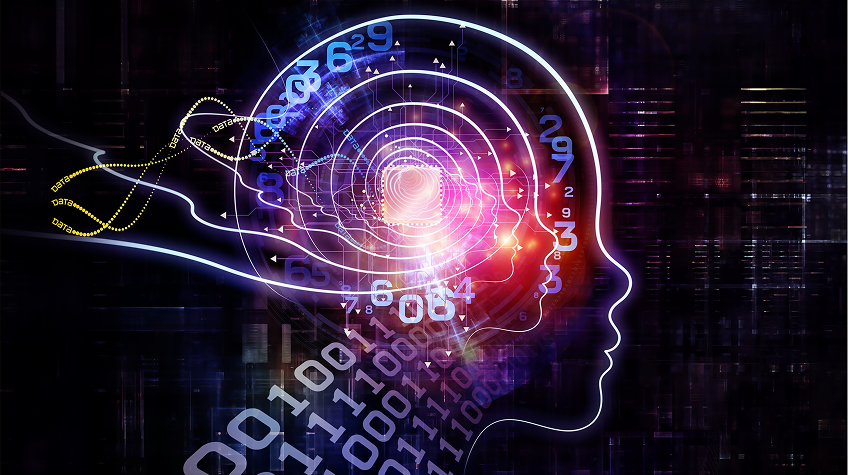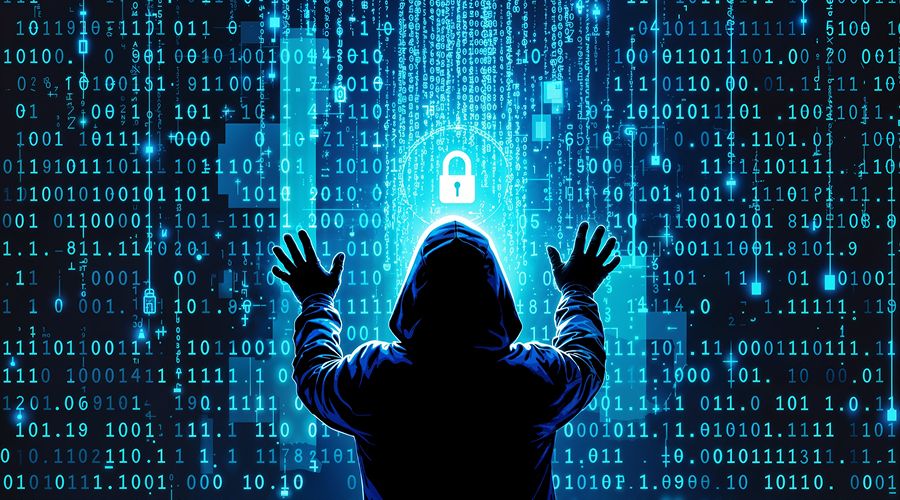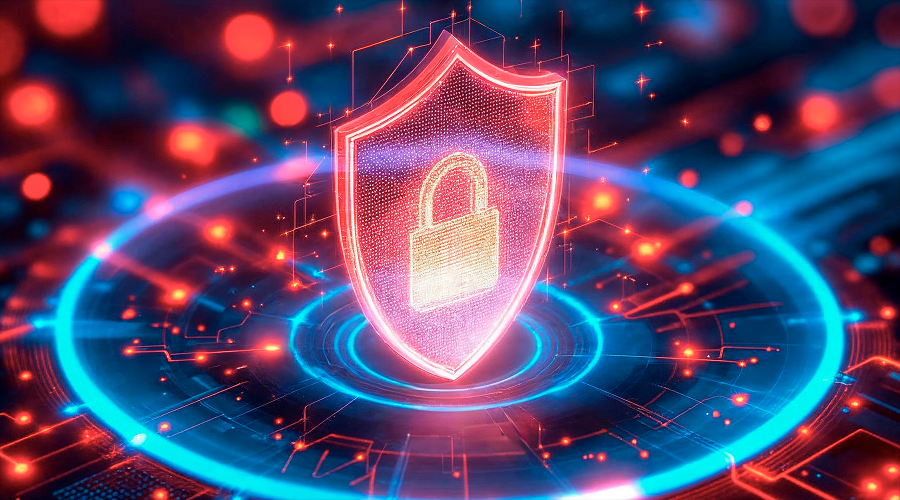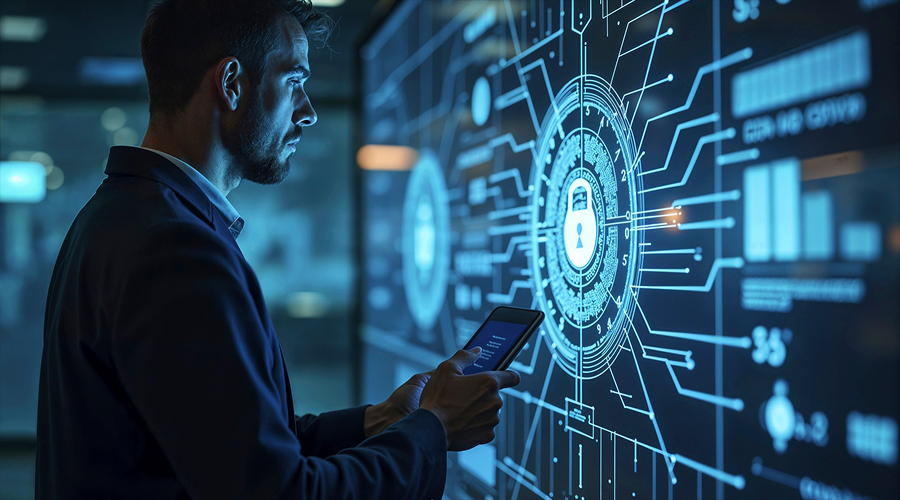
AI is making cybersecurity more effective by identifying threats early, detecting intruders, and automating activities to fight them. Understand how artificial intelligence is changing the way we keep our digital life secure.
Nowadays, cybersecurity plays a bigger role than it ever did before. When more people, companies, and governments go online, cyberattacks have become more common and complex. While traditional cybersecurity methods help, they do not always prevent attacks. With Artificial Intelligence for cybersecurity, companies can enjoy faster, more precise, and more adaptable means of dealing with cyber threats.
Analyzing ongoing events, finding suspicious actions, and acting immediately are tasks now handled by AI. Cybersecurity is now able to predict and prevent attacks using AI. In this blog post, look at how AI is changing cybersecurity, what advantages it offers, and why it is necessary for protecting our technology in the future.
Benefits of AI in Cybersecurity
1. Faster Threat Detection: In a short time, AI is capable of searching through large datasets for possible threats. AI is more accurate than a human in detecting small changes, as it notices them right away.

2. Real-Time Monitoring: Networks are being constantly watched by AI systems every day and night. Keeping an eye out all the time helps prevent threats from doing harm.
3. Reduced False Positives: With time, AI can tell what’s harmful and what’s not. So, this approach lessens incorrect alerts and makes life simpler for those in cybersecurity.

4. Predictive Analysis: AI takes action before a threat materializes. Studying how attacks have happened in the past, AI can predict future attacks and prepare for them early on.
5. Automated Responses: As soon as it notices a threat, AI has the authority to block it or the surrounding machines to prevent further damage, without requiring human decisions.
6. Adaptive Learning: In response to every threat, machine learning can improve and change. Therefore, security systems keep getting better and more advanced.
7. Cost Efficiency: It can complete tasks that used to need a large group of analysts, helping cut down expenses for security.
Also read: What is Cyber Security? The Different Types of Cybersecurity
Role of AI in Reshaping Cybersecurity in the Digital Age

1. Threat Intelligence and Prediction
Multi-layered computer systems can process large amounts of information from previous and current cyber attacks to form useful risk advice. AI can review data from network servers, underground hacking communities, malware places, and even postings online. AI notices emerging trends, reveals patterns that people don’t notice, and reveals issues that may affect security. As a result, organizations work to fix their weaknesses early on, preventing trouble.
For example, if AI sees more ransomware attacks on healthcare systems in a particular area, it may inform other firms in that field to take action quickly. Predictive analytics lets analysts evaluate when, how, and how severely future attacks might happen.
Also Read: The Role of Artificial Intelligence in Cyber Security
2. Behavioral Analytics
Most humans are likely to show the same patterns online, such as their regular login times, IP numbers, and type of devices. Algorithms monitor user activity to identify and filter users, devices, and apps into unique groups. An example of a deviation is when someone from a different country logs in, or a lot of large files are moved overnight. As a result, AI would step in and either flag the activity or completely block it.
It is very hard to spot insider threats and compromised credentials using traditional cyber defence approaches, making behavioral analytics especially important. After learning from user patterns, AI systems can better spot suspicious behavior.
3. Phishing Detection and Email Security
Since phishing emails often seem genuine, it’s not easy for people to notice them on their own. To catch these tricks, AI looks at the email text with NLP Applications to spot signals of pressure, malicious language, and schemes. It also examines email header information, any links hidden within the message, and what attachments do when accessed. If a message is made to seem like it’s from a bank but the link goes to a slightly different domain, AI will immediately find the issue.
As AI learns about updated phishing types, it becomes much more effective than old-fashioned security filters. It lowers the possibility of data breaches occurring because of errors by employees.
4. Malware Detection and Removal
Known malware is found by matching its signatures using antivirus software. However, because new types of malware appear every day, signature-based techniques are no longer sufficient. AI relies on machine learning to follow the actions of malware, but it also checks for changes in the system and any external communications.
If suspicious behavior is found by AI, it can either prevent the spread by blocking or quarantining the threat or delete the file itself. With secure sandbox testing thanks to AI, certain systems check files to make sure they are safe before letting them access the network. Identifying these in real-time allows the system to find polymorphic and zero-day types of malware that others might miss.
5. Automated Incident Response
Being able to answer quickly matters a lot during a cyberattack. Responding to attacks manually can take up a lot of time, which means hackers have more opportunities to do harm. Playbooks and quick decision-making are behind AI’s automation of this process. As an example, if AI detects that a DDoS attack is happening, it can close off connected servers, move traffic elsewhere, and notify the security team.
AI can automatically begin backups, break infected linkages, and prevent ransomware from continuing to spread. This technology prevents errors from humans and makes responding to threats quicker and more standardized.
6. Network Security Enhancement
There are countless devices and endless data moving through today’s networks. It uses anomaly detection to detect what is average network traffic. Next, it keeps a constant eye out for any fast changes, unapproved transfers, and strange outside connections.
With AI, firewall settings can be adjusted in real time, unknown IPs can be stopped, and vital alerts are handled with priority. When traditional barriers don’t protect cloud or IoT systems, AI comes in and safeguards them through its attention to behaviour and automation.
Also Read: A Complete Checklist of Network Security Best Practices
7. Identity and Access Management (IAM)
It is very important in cybersecurity to control who can view and use data. AI helps IAM by analyzing user access behaviour regularly. AI may flag a situation when an employee quickly asks to access favorite programs or try new methods of accessing the company’s network. It also makes it possible to provide different levels of security depending on the possible threat.
A login from a location outside your country could result in MFA (multi-factor authentication) or temporary access being blocked. AI is able to detect attempts by hackers to get elevated access and combat these attacks as early as possible.
Conclusion
In summary, AI can no longer be considered optional in cybersecurity, but is now considered vital. Now that threats are getting smarter and more regular, standard methods no longer meet the challenge. AI has a security system that improves as more dangers emerge. Early risk detection and automatic notification give cybersecurity a valuable advantage today. Everyone, companies and individuals, needs to rely on AI to protect themselves more effectively in today’s connected society. Now, the future of cybersecurity exists and runs on artificial intelligence.






